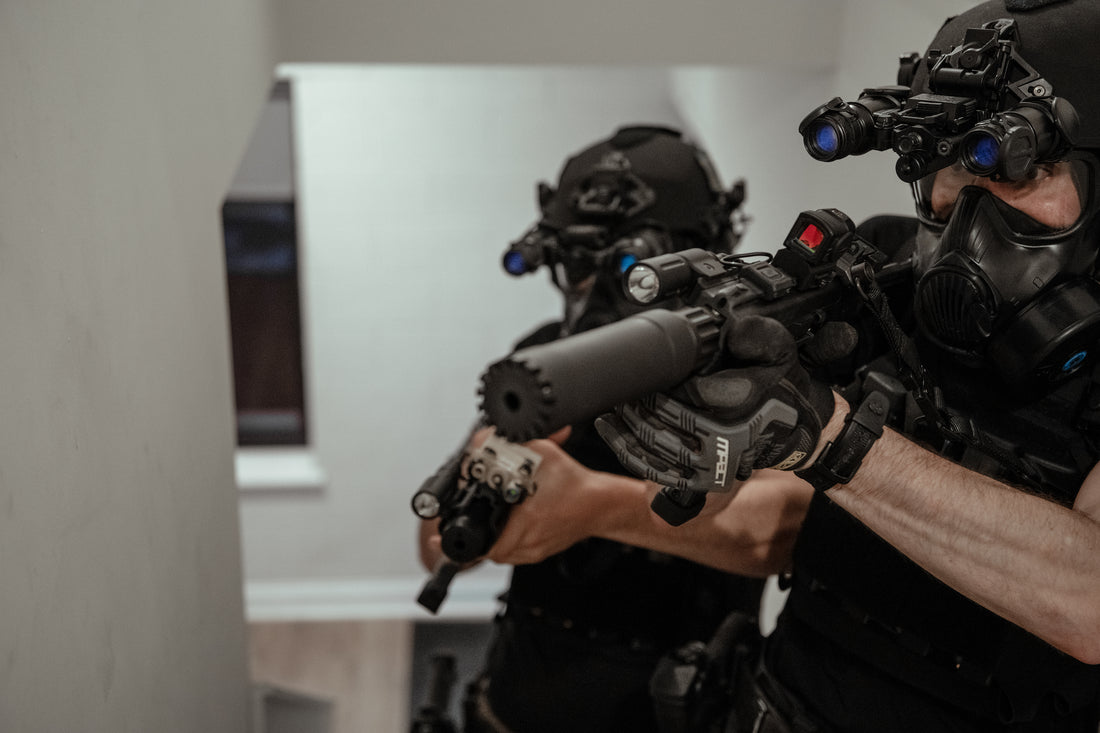When it comes to protecting your home and loved ones, having a solid plan and understanding the principles of Close Quarters Battle (CQB) can significantly enhance your ability to respond effectively in a home defense situation. CQB techniques, developed and refined by military and law enforcement professionals, provide valuable insights into maneuvering, engaging threats, and maintaining situational awareness in confined spaces. In this blog post, we will explore the application of CQB principles to home defense, equipping you with the knowledge and strategies needed to protect your home in a close-quarters scenario.
1. Understanding CQB Principles:
CQB principles revolve around the concepts of speed, surprise, and violence of action. They focus on efficient movement, maintaining situational awareness, and quickly neutralizing threats in close-quarters environments. Adaptation of these principles to a home defense context requires a balance between aggression and sound tactics, considering the unique layout and potential hazards within your home.
2. Establish a Safe Room:
A safe room is a designated area within your home where you can retreat with your family during a home invasion. It should have reinforced doors, solid walls, and limited entry points. Before an incident occurs, ensure that everyone in the household knows the location of the safe room and how to quickly access it. This allows you to consolidate your family, establish communication with the authorities, and buy time until help arrives.
3. Prioritize Communication and Coordination:
Effective communication and coordination are vital in a home defense scenario. Establish clear and concise verbal commands for family members to follow during an emergency. Practice these commands regularly to ensure they become second nature. Assign roles and responsibilities to each family member to maintain order and prevent confusion. Implement a communication plan that includes hand signals or a reliable means of communication within the safe room.
4. Develop a Home Defense Plan:
Create a well-thought-out home defense plan that considers different scenarios and potential entry points. Identify areas of vulnerability and implement security measures such as reinforced doors, window locks, and alarm systems. Designate primary and secondary evacuation routes and establish rally points outside your home. Regularly review and update the plan to address any changes in your home's layout or family dynamics.
5. Maintain Situational Awareness:
In a home defense situation, maintaining situational awareness is critical. Keep yourself informed about the layout of your home, knowing where potential threats or hiding spots may be. Install motion-activated lighting both inside and outside your home to alert you to any unusual activity. Use reflective surfaces strategically to gain visual information about your surroundings without exposing yourself. By staying alert and actively scanning your environment, you can quickly identify and respond to potential threats.
6. Clearing and Moving Techniques:
In a home defense scenario, understanding proper clearing and moving techniques is essential. If you find yourself needing to move within your home, use the "slicing the pie" technique. This involves moving along the edges of doorways or corners, gradually exposing small portions of the room while minimizing your own exposure. Maintain a low profile, moving quickly from one piece of cover to another. Engage threats decisively and effectively, aiming for center mass while minimizing collateral damage.
7. Seek Professional Training:
To fully grasp the intricacies of CQB principles and their application to home defense, consider seeking professional training. Many reputable firearms training facilities offer courses specifically tailored to home defense scenarios. These courses provide hands-on experience, scenario-based training, and valuable guidance from experienced instructors. Training allows you to develop the necessary skills, confidence, and decision-making abilities required for effective home defense.
Conclusion:
Applying CQB principles to home defense provides a solid foundation for protecting yourself and your loved ones in close-quarters scenarios. By establishing a safe room, priorit

